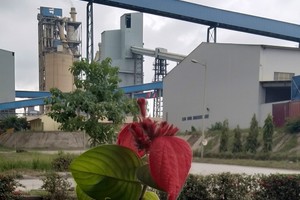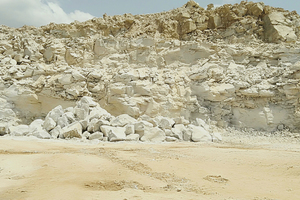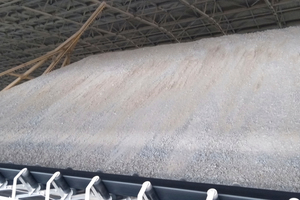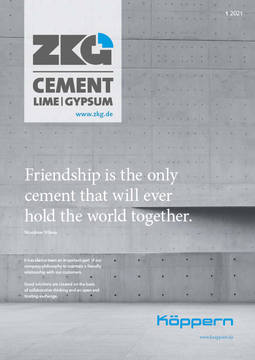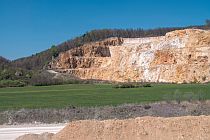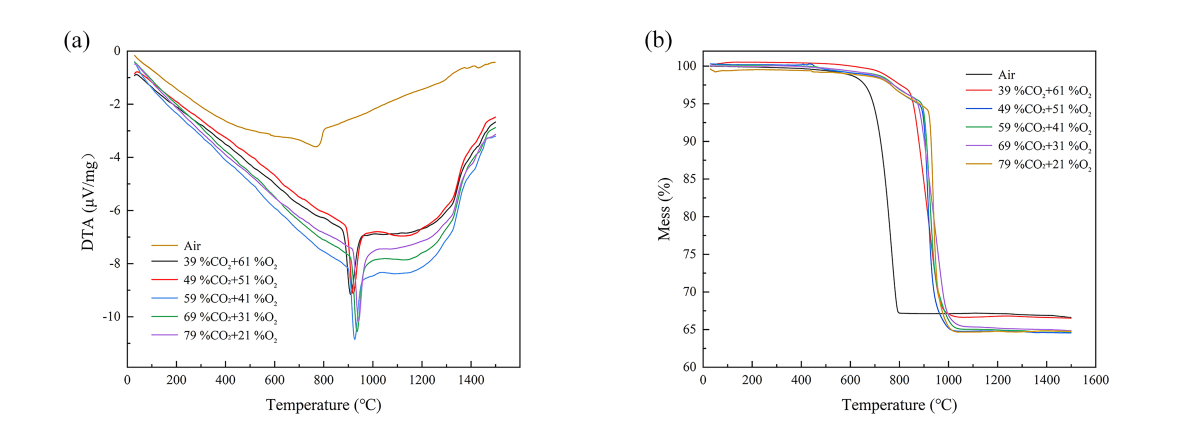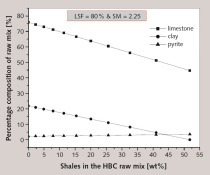Optimizing cement strength
One of the most critical and important performance-based evaluations of any cement type is its strength development characteristic. Cement strength is maintained, controlled and optimized on the basis of the type of cement produced, strength grade, national/international product standards requirements, application/customer demand and market competitiveness. It is probably the one component which is given highest priority during cement manufacturing (plant), also given highest publicity in the advertisements (marketing) and also given the highest importance by the end user (customer/consumer). It may be noted that the flexural strength of cement is less than the compressive strength; routinely, it is within 12-20% of the compressive strength of cement. The strength of cement can be optimized and improved by optimization of the process and quality parameters maintained during the cement manufacturing process and by careful selection of the input materials.
1 Introduction
In this article we will identify the critical parameters and factors which affect the strength of cement as well as their subsequent optimization in order to produce cement with good strength development characteristics.
The strength development of cement is dependent primarily upon the following factors:
1. Chemical composition of clinker/cement
2. Raw milling and pyroprocessing conditions
3. Cement milling conditions
4. Dilution of active reactive component i.e. clinker
5. Prehydration of reactive component i.e. clinker/cement
Now, each of the factors which impact the strength development characteristic of cement will be analysed in detail.
2 Chemical composition of the clinker/cement
In chemical composition the following parameters are most important w.r.t strength development:
2.1 Lime Saturation Factor (LSF)/Tri Calcium Silicate (C3S)
Increasing the clinker LSF up to a certain threshold level improves cement strength development by increasing the C3S component. However, increasing over and above that threshold value; instead of strength development, strength loss is encountered since the lime will remain as free lime and another problem of cement expansion can be faced.
According to the study referred to, the increase in strength for Type I Cement by raising the clinker LSF from 96 to 98 is only 1-2 MPa [1]. Whereas as per another literature source, the strength increase/decrease of cement by ±1% clinker LSF is ±5% at 1 day and ±1.5% at 28 days [2].
C3S primarily governs strength gain up to 28 days while C2S has more impact on later strength. Work reported by Hewlett (2003) indicates that at six months, the strength is largely independent of C3S/C2S proportions [2].
As per data published in the literature source referred to, it indicated that the strength at ages up to 28 days was found to be a function of the content of 3CaO∙SiO2 (C3S), while the increase in strength between 28 days and 6 months was roughly linearly related to the content of 2CaO∙SiO2 (C2S). With more finely ground cements, the di-calcium silicate probably began to produce its effect somewhat earlier [3].
2.2 Silica Modulus (SM)
Increasing clinker SM also improves the compressive strength, however, the strength gain is normally not exceptional.
2.3 Tri Calcium Aluminate (C3A)
C3A also improves the strength potential however not at the later stages, but it is primarily the 1-day strength which is increased.
2.4 SO3
Increasing gypsum/SO3 up to a certain optimum level increases the cement strength development. However, increasing SO3 beyond that level will decrease the compressive strength and also will cause a cement expansion problem i.e. delayed ettrignite expansion.
As shown in the study referred to, the impact of 0.5% SO3 increase is 0.9 MPa (1 day), 1.0 MPa (3 days), 1.2 MPa (7 days), and 1.0 MPa (28 days) (C109 mortar cube strength test) [2].
During pyroprocessing, sulfate in stoichiometric excess of alkalis will be present as CaSO4; this binds lime in CaSO4, reducing the effective LSF and the potential C3S in clinker; hence the decrease in compressive strength [6].
2.5 Alkalis
Alkalis (Na2O/K20) in cement increase the cement strength potential at an early age however 28 days’ strength is dropped by more or less the same amount.
In a study it is shown that the decrease of soluble alkali in clinker is only by 0.15% (Na2O eq); 28 days’ strength was improved by 2 MPa; however early strength will drop by the same amount [1].
Whereas another study shows a high alkali level in cements (over 0.8% Na2O eq) when present as alkali sulphates increase the early strength by > 10%; whereas 28 days’ strength is reduced by 10-15% [3].
As per another literature source the increase of 0.1% Na2O eq increases the 01 days’ strength by 1.2 MPa (1 day), 0.8 MPa (3 days), 0.4 MPa (7 days) and -0.8 MPa (28 days) (C109 mortar cube strength test) [2].
High K20 in clinker acts as an inhibitor to C3S formation by stabilizing the C2S.
In a nutshell, the impact of alkalis on initial strength is positive whereas on 28 days’ strength it is negative.
2.6 Loss on ignition
LOI normally indicates the non-reactive component added during cement manufacturing; and also indicates the prehydration of the clinker/cement used. In the first case the strength is normally not affected since the parameters are fine tuned to the level of the additives added, whereas in later cases strength is negatively affected since prehydration of clinker/cement not only results in strength loss but also results in delayed setting.
According to the reference used, the impact of +1% LOI is -0.8 MPa (1 day), -1.0 MPa (3 days), -1.2 MPa (7 days) and -1.0 MPa (28 days) (C109 mortar cube strength test) [2].
2.7 Free lime (fCaO)
Lime which remains uncombined during pyroprocessing is termed as free lime; hence is not available for strength development and also leads to cement expansion problems.
According to a literature source, the impact of +1% free lime is -2% strength at 28 days [2]. Whereas per another literature source, the impact of +0.3% free lime is -1.2 MPa (1 day), -0.5 MPa (3 days), -0.4 MPa (7 days) and -0.6 MPa (28 days) (C109 mortar cube strength test) [2].
2.8 MgO
MgO has an indirect way of affecting the strength of cement by modifying the structure of C3S; from the reactive rhombohedral form to the less reactive monoclinic crystal form; hence resulting in a strength decrease [6].
3 Raw milling and pyroprocessing conditions
3.1 Raw milling (raw meal quality)
The basic requirement is to avoid coarse raw meal particles in order to enhance easy combinability without any requirement for hard burning.
Alite formation in clusters around grains of free lime is attributable to a coarse calcite grain, similarly belite formation in clusters produced as a result of coarse silica particles in the raw mix will make the clinker difficult to grind as compared to clinker with well-distributed individual crystals; hence the loss of strength.
Another requirement is to avoid high variations in the raw meal in order to ensure a smooth and consistent heat profile in the kiln; hence resulting in a clinker with good quality and mineralogy.
3.2 Pyroprocessing conditions
The thermal profile of long kilns produces less reactive clinker of large alite and belite size, while shorter and faster preheater/precalciner kilns produce reactive clinker of small crystal size. Underburning produces poor quality clinker of very small clinker size, which is less reactive as well as having high grindability.
A long flame gives slow heatup and slow cooling of the kiln charge before it falls from the kiln. This will tend to produce large alite and belite crystals resulting in a coarse grained clinker matrix with poor reactivity and poor grindability.
3.2.1 Alite size
Rapid heating in the burning zone (heat rise of kiln charge/feed) within the temp range of 1200-1450° C (where C2S is combining with CaO to form C3S) is desirable and produces a C3S crystal size in between 15-20 μm whereas slow heating produces alite of the size 40-60 μm or more [2].
3.2.2 Belite size (BS)
Reflects retention time in the burning zone above 1400° C. Maximum retention is preferred and is indicated by an average crystal length of 25-40 μm while a short retention yields 5-10 μm [4].
3.2.3 Clinker with less porosity
Due to hard burning will cause large crystals of alite/belite, and often contributes to generation of dust and/or large clinker balls giving poor grindability and poor strength characteristics.
3.2.4 Clinker produced under reducing conditions
Also leads to poor grindability and reactivity; one indication of such clinker is the presence of brown cores. Kiln reducing conditions also lead to decomposition of C3S into C2S and free lime also leading to grindability and strength development problems.
3.2.5 Clinker that is produced by rapidly heating the kiln feed
To the reaction temperature and then quickly cooling the clinker results in many small reactive crystals. These smaller crystals make the clinker easier to grind and produce cement that displays excellent strength gains
3.2.6 Rapid quenching of clinker
Also leads to reactive clinker crystals whereas slow cooling also leads to dusting of clinker by converting β-C2S (belite) into γ-C2S (belite) leading to dust/powder formation. Furthermore, very slow cooling below 1250° C may convert C3S to C2S and free lime leading to grindability issues. Rapid cooling of the clinker leads to very good strength development.
One literature source indicated the impact on compressive strength after cooling the clinker at a different rate as mentioned in Table 1 [3].
In short, if we analyze the raw milling/pyroprocessing conditions we can summarize the desired operating requirements as; fine raw meal (not coarse particles especially if they are in the form of pure calcite and pure quartz), short and rapid heat rise under oxidizing conditions (not reducing conditions); no hard burning, no direct impingement of flame on load; rapid quenching of clinker.
4 Cement milling conditions
The most critical parameters to be controlled during the cement milling stage in order to optimize the cement strength are as below:
4.1 Fineness and particle size distribution
The literature has revealed that particles below 3 μm contribute to 1 day’s compressive strength however at high water demand; while 3-25 μm govern 28 days’ compressive strength. Particles greater than 25 μm have a negligible contribution to the strength. (2)
Another literature source indicated that particles within 3-32 μm contribute to strength development [1].
One literature source indicated the strength data for two sets of cement ground to a range of fineness as mentioned in Table 2 [3].
It may be noted that the relationship of high Blaine with high strength relates well with pure clinker/gypsum systems while with large additions of additives like limestone; the relationship is not that linear since limestone/gypsum is very soft to grind in comparison with clinker; hence in PSD their particles will lie in the fine fraction and the clinker particles will lie in the coarse fraction and hence will not contribute to hydration reactions and hence there will be no strength development; until and unless ground to a much finer level.
It may be considered that fine cement gives high mortar strength but not necessarily high concrete strength; since in order to produce the same workability more water will be required and more water means loss of concrete strength. Hence concrete strength at fixed workability and not at fixed water cement ratio is ultimately critical.
4.2 Cement milling temperature
Another factor affecting the cement strength is the milling temperature; the ideal milling temp should be within the 90-115° C range in order to have sufficient dehydration (60% gypsum dehydration) to give readily available sulphate ions which will not only be good with regard to setting time regulation but also will optimize the compressive strength; but the dehydration should be less enough to avoid a false set.
At 90-115 gypsum undergoes dehydration first to hemihydrate and then to soluble anhydrite; both have a higher dissolution rate than dihydrate gypsum, hence are better set regulators and also promote good development of strength.
If too much gypsum is dehydrated; it results in rehydration of gypsum on adding water and results in false set or plaster set; however, it can be broken by constant mixing and initial workability can be restored.
However, in the case of too little sulfate ions or very high clinker reactivity due to a number of reasons; there is irreversible loss of workability with excessive heat release which cannot be restored and hence is termed as flash set.
5 Dilution of active reactive component i.e. clinker
Addition of any additives like limestone fly ash will decrease the compressive strength until and unless the clinker parameters like C3S/C2S/C3A/C4AF and cement grinding SO3 are not adjusted accordingly.
At the cement milling stage with the addition of additives, fineness has to be increased/residue to be decreased in order to compensate for the strength loss.
The reduction of strength will depend upon the type of additive added as well as the percentage feeding of the additives; it may be noted that the behavior of one additive is different from the other due to inherent properties (chemical/physical).
6 Prehydration of reactive component i.e. clinker/cement
In case of prehydration of clinker/cement, not only the strength is negatively affected; but the setting time is also delayed. An increase of 0.1% LOI due to prehydration results in a cement strength decrease of 1.0 MPa (1 day) and 1.7 MPa (28 days) [1].
Cement should be ideally below 60° C when conveyed to cement silos. Storage of cement above 80° C leads to dehydration and release of water reacts with cement and leads to lumps/build ups in silos and also to loss of strength and delayed setting time.
Even under ideal storage conditions cement loses its strength value; hence cement should be consumed on the FIFO basis.
According to the literature source referred to, the average reduction of strength in a 1:2:4 concrete mix as a function of the storage period is as in Table 3 [5].
The main thing to be avoided is moisture/humidity; as that is most dangerous for cement quality and strength development.
7 Conclusion
If the above parameters are given due consideration and priority during the cement manufacturing process, this will result in a cement with good strength properties; hence better acceptance in the market, better sales, customer retention and satisfaction and no complaints.
Moreover, cement plants can develop a strategy on the basis of the above factors that shows which component should be given priority above the other so that the best strength can be achieved at the lowest input cost and the least impact on the production volumes.
In addition to the above factors which impact the cement strength, many cement manufacturers use performance enhancers during the cement grinding stage to optimize the strength development characteristic of the cement produced.

